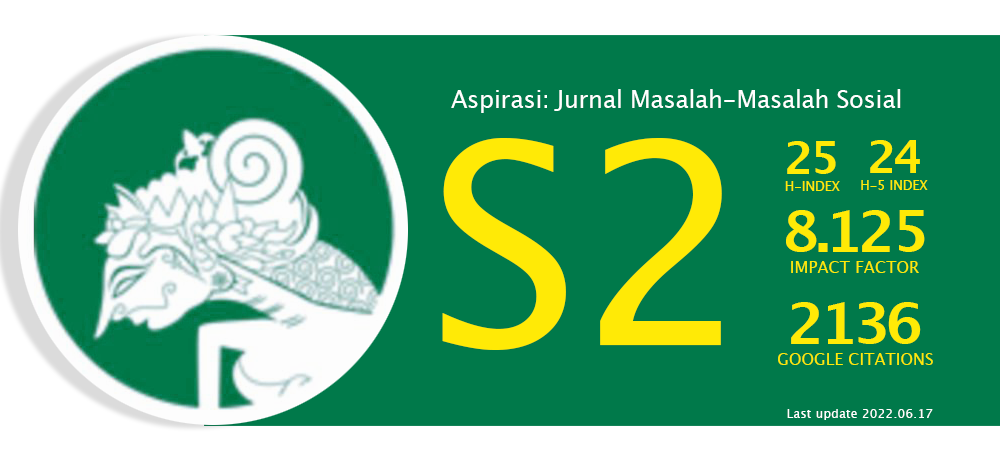Swafoto: Sebuah Pendekatan Teori Manajemen Privasi Komunikasi
Abstract
Selfie has evolved into a global phenomenon. The popularity of selfie has brought some great concerns about identity, privacy, security and control. The habit that accompanies when uploading selfies is to give too much information. This study explores privacy in selfies culture with communication privacy management (CPM) theory. This research uses qualitative research method of phenomenology. The experience that became phenomenon in this research is about swafoto. Phenomenological research is done by collecting data from people who have experienced the phenomenon, and developed a description of the essence of experience for all individuals. This description consists of “what” they experience and “how” they experience it. The results of the analysis show that there is a consideration of privacy by respondents in uploading selfie. Respondents who have received the condition of private informacy turbulence try to consider the situation by the needs of them selves and the opinions around them. Based on the results of the study can be known early adolescent age group 12 s.d. 17 years old actually has a higher level of privacy when doing swafoto and upload it in social media when compared with other age groups. Need further research on selfie among others research that ask about their motivation who likes to do selfie, research related to public perception related to selfie by public official .
Selfie atau swafoto telah berkembang menjadi fenomena global. Kepopuleran swafoto ikut membawa sejumlah kekhawatiran besar tentang identitas, privasi, keamanan, dan pengawasan. Kebiasaan yang menyertai saat mengunggah swafoto adalah memberikan informasi yang terlalu banyak. Artikel ini berusaha mengkaji budaya swafoto terkait dengan privasi menggunakan teori manajemen privasi komunikasi atau communication privacy management (CPM). Penelitian ini mengunakan metode penelitian kualitatif fenomenologi. Pengalaman yang menjadi fenomena dalam penelitian ini adalah swafoto. Penelitian fenomenologi dilakukan dengan cara mengumpulkan data dari orang-orang yang telah mengalami fenomena tersebut, dan mengembangkan deskripsi dari esensi pengalaman untuk semua individu. Deskripsi ini terdiri dari “apa” yang mereka alami dan “bagaimana” mereka mengalaminya. Hasil analisis menunjukkan sudah adanya pertimbangan privasi oleh responden dalam mengunggah swafoto. Responden yang pernah mendapatkan kondisi private informacy turbulence berusaha untuk menimbang tuntutan-tuntutan situasi dengan kebutuhan dirinya dan pendapat orang lain yang ada disekitarnya. Berdasarkan hasil penelitian dapat diketahui bahwa kelompok usia remaja awal 12 s.d. 17 tahun justru memiliki tingkat privasi yang lebih tinggi saat melakukan swafoto dan mengunggahnya di media sosial bila dibanding dengan kelompok usia lainnya. Perlu penelitian lanjutan tentang selfie antara lain penelitian yang bertanya tentang motivasi mereka yang gemar melakukan selfie, penelitian terkait dengan persepsi publik berkaitan dengan selfie oleh pejabat publik
Keywords
Full Text:
pdfReferences
Jurnal
Aunu, R. D.(2013). “Teknik Pengumpulan Data dalam Penelitian Kualitatif.” Quantum Sinergis Media, Vol : XX, No : 1, 76.
Busetta, Laura, V. C.(2015). “Be Your Selfie: Identity, Aesthetics and Power in Digital Self-Representation”. Networking Knowledge,8(6), 1-3.
Davis, Katie. (2013). “Young people’s digital lives: The impact of interpersonal relationships and digital media use on adolescents’ sense of identity”. Computers in Human Behavior, 29(6), 2281–2293.
Dhir, A., Torsheim, T., Pallesen, S., & Andreassen, C. S. (2017). “Do Online Privacy Concerns Predict Selfie Behavior among Adolescents, Young Adults and Adults?.”Frontiers in Psychology, 8, 815. https://www.ncbi. nlm.nih.gov/pmc/articles/PMC5440591/ diakses 11 Mei 2018.
Frost, P. 2015. Frosh, P.(2015). “The Gestural Image: The Selfie, Photography Theory,and Kinesthetic Sociability. International” Journal of Communication, 9, 1607-1628.
Iqani, Mehita; Schroeder, Jonathan E.(2016). “Selfie: Digital Self-portraits as Commodity form and Consumption Practise.” Consumption Market & Culture,405-415.
Miguel, C. (2016). “Visual Intimacy on Social Media: from Selfies to The Co-Construction of Intimacies through Shared Pictures”. Social Media+ Society, 2(2),2056305116641705.
Petronio, S. (2004). “Road to DevelopingCommunication Privacy Management Theory: Narrative in Progress, Please StandBy.” Journal of Family Communication, 4(3&4), 193–207.
Putri, Dian Kartika; Nirwana, Maya Diah danSobari,Wawan. (2012). “Analisis Manajemen Privasi Komunikasi Korban Cyberstalking dalam Facebook.” . Jurnal Interaktif Vol 3, No.2 Tahun 2010.
Tiyarestu, Anya Cahyaning & Cahyono, Rudi.(2015). “Perbedaan Communication Privacy Management di Media Sosial Twitter pada Remaja dengan Tipe Kepribadian Extravert dan Introvert.” Jurnal Psikologi Pendidikan dan Perkembangan, Vol. 04 No. 1, 65.
Van Dijck, J. (2013). “You have one identity: Performing the self on Facebook and LinkedIn.” Media, Culture and Society, 35(2), 199–215.
Buku
Barthes, R. (1981). Camera Lucida: Reflections on Photography. New York, NY: Hill and Wang.
McBride, K., & Rosenstiel, T. (2014). The New Ethics of Journalism: Principles for the 21st Century. Thousand Oaks, CA: CQ Press.
Mendelson, A., & Papacharissi, Z.(2011).Look at us: Collective Narcissism inCollege Student Facebook Galleries. In Z. Papacharissi (Ed.), A Networked Self: Identity, Community and Culture on Social Network Sites hlm. 251–273). New York, NY: Routledge.
DOI: https://doi.org/10.46807/aspirasi.v9i1.995
Refbacks
- There are currently no refbacks.








